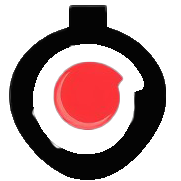The possibility exists that U.S. food manufacturers will need to eliminate food colors from their offerings. If this happens, products may not look or taste the same relative to customer expectations. What if Cheetos no longer have Yellow (6) food coloring? What if Blue Mountain Dew no longer has Blue (1) and Red (40)? How will this potential Federal ruling affect the quality perceptions of these (and many, many other) brands?
There are numerous definitions of quality. Depending on which quality guru you prefer, quality is:
- Conformance to requirements and customer specifications (Crosby).
- Extent to which a product successfully serves the purpose of the user (Juran).
- Efficient production of the quality that the market expects (Deming).
- Quality is not what the supplier puts in; it is what the customer gets out (Drucker).
This article is part of Branding Strategy Insider’s newsletter. You can sign up here to get thought pieces like this sent to your inbox.
At the core of these definitions is the principle that quality is consistent conformance to customer expectations. That is, consistently living up to the expectation of satisfaction. Variability is anathema to quality. Customers expect a brand to deliver its promise consistently – every time, everywhere, to every customer. A brand promise has functional, emotional, and social (including digital) benefits. A brand has a personality and reflects its users’ values. A brand promise delivers physical, psychological, and visual elements.
Predictability, not variance, is the key predictor of quality. Quality is not what we promise. Quality is not what we intend to make. There is only one definition of quality, which is not defined by marketers or manufacturers. Quality is defined by customers: Quality is what customers receive and perceive. This is the only reality. Living up to expectations consistently is how a brand becomes a trusted, quality brand.
Decades ago, speaking at a conference, Dr. Edward Deming, one of the heroes of quality management, stated that because of consistent conformance to expectations, the highest quality restaurant was McDonald’s. He was laughed out of the country. He went to Japan, where he was hired to help Toyota. Pick up a copy of The Toyota Way book. The result of Dr. Deming’s principles continues to make Toyota vehicles consistent performers, living up to customer expectations, vehicle after vehicle.
And, this is what J.D. Power and multitudes of consultants measure: consistent – or inconsistent – conformance to expectations. That is, when you buy a new car, you expect the vehicle to work. Period.
The Law of The Diagonal is the heart of understanding quality measurement.
Yet in quality measurement, we encounter a problem with how many consultants, analysts, and researchers present quality performance. The problem stems from their love of quadrant analyses.
About ten years ago, Financial Times articulately trashed the business models and strategic visualizations that are often based on the circular strategy loop or the extraordinarily common 2 x 2 matrix. Management consultants, analysts, and researchers love these loops and matrices.
The circular strategy loop, what Harvard Business Review called the “crap circle,” visualizes an ongoing virtuous circle of input and output. Financial Times pointed out that these are “visual ephemera… indefinitely repeatable perpetual motion machines that if these were real, “chief executives and their teams could go home.” “Rubbish strategies and failing business models should be thrown out, not recycled.” Financial Times lamented, “Why do I want to see that businesses and brands are going around in circles instead of moving forward?”
The defining example of foolishness is the 2 x 2 matrix. Every consultant, every analyst and every researcher uses this, although sometimes the matrix is a 3 x 3. The idea behind this construct is that it is always better to be in the upper right hand box. The upper right hand box is where dreams come true. This is where your business or brand is high on the right measures.
For example, you want your brand to be in the upper right-hand box so it can be high on perceived innovativeness and profitability. You also want your brand to fall in the upper right-hand quadrant, where it is both important to the brand’s future and generates distinguishing characteristics. Or, you want your brand to be high on performance and we-do-this-well.
However, when it comes to quality, the traditional upper right-hand corner approach of the 2 x 2 matrix does not work. And, yet, there it is in the presentations.
When it comes to assessing quality, the two key factors are customer-perceived average expected performance and expected performance variation. As variation decreases, customer satisfaction increases. In other words, a high average performance expectation with low variation from expectations is good. Ergo: The highest quality brands are in the lower right-hand quadrant, which is high on experience expectation and low on variation. The familiar, upper right-hand quadrant would be high on satisfaction and high on variation, not a good place to be, and almost impossible to imagine: why would I be highly satisfied when each use of the brand is different from before? Why would I put up with that state of affairs?
Think about the judges on TV’s Chopped. One judge may say that the meat is overcooked, while two other judges say their meat is cooked perfectly. Judges may critique a contestant chef because pieces of food are “inconsistently” cut. Usually, this contestant chef does not make it to the next round of competition. Variance is a no-no.
We call this the Law of the Diagonal. It is not Euclidean geometry. It is basic marketing common sense. When you array brands in a consideration set on a chart with customer expected variability on the horizontal axis and performance expectation on the vertical axis, the least quality brands will be located in the upper left: low on performance and high on variability. The brands will array on a diagonal from the upper left to the lower right-hand: a swath of diagonally arrayed brands. The higher the perceived quality, the lower the box.
In the Financial Times’ article, the CEO of design firm IDEO said that the 2 x 2 matrix is the strategy consultants’, analysts’, and researchers’ favorite construct, as the upper right-hand box is “nirvana” and always just out of your grasp. Because nirvana is out of reach, the consultants, analysts, and researchers wind up with a very profitable annuity. In the case of quality, the upper-right quadrant of the 2 x 2 matrix is not just plain misleading; it is not possible.
The best brand advice is to ditch the idea of discrete quadrants. Life is a continuum, not boxes. Quality lives on a continuous diagonal, not in four arbitrarily defined, discrete boxes. Believing that the top right-hand box is where you want to be is death-wish marketing when it comes to quality.
Here are some other important realities about quality to keep in mind.
1. Quality and image are not always aligned. Range Rover has an incredibly premium image among automotive brands. However, Range Rover has for years been at the lower end of the quality scale in J.D. Power ratings.
2. Communications about quality can help or hurt a brand. In the 1980s, Ford Motor Company ran advertising using the tag line: Quality is Job #1. The premise of the advertising was to let customers know that Ford vehicles were manufactured in a quality manner. And, let customers know that Ford is obsessed with quality. This was a time when drivers said Ford stood for “Fix Or Repair Daily.” It was also a time when other automotive companies were offering 4-year warranties. Ford offered three-year warranties, as there was concern that the vehicles would not make it to the fourth year. Critically, for drivers, saying Ford was focused on quality was contrary to the reality of what drivers experienced. Promising and advertising the promise and then not delivering is disastrous for brands.
3. Data show that quality and high price are correlated. Customers are, in many cases, predisposed to associate high-priced, high-end brands with high quality. The retail approach of Good-Better-Best educates customers to the idea that if you spend more money, you receive a better quality product or service. Of course, this approach is a marketing and brand misstep. Toyotas are high-quality vehicles, and so are Lexus vehicles, even though the price differentials are staggering.
4. Perceived quality is overwhelmingly the most important determinant of brand strength. Over the years, research shows that brands seen as high quality have double the earnings of brands seen as low quality.
5. In 1990, a marketing guru named Peter Doyle published an article on research he had conducted. His findings were that: “Quality generates higher margins in two ways: 1) quality boosts market share, which results in lower unit costs through economies of scale. And 2) by creating a differential advantage, quality permits higher relative prices.”
We know through other quantitative data that high-quality brands are the strongest price competitors in their competitive sets. Quality brands can hold a high market share and higher prices.
Some say that quality is a result of product or service performance. This is a myth, a fable. Saying quality is a result of product or service performance is a half-truth. So, it is half wrong. A quality brand is more than a quality product or service. A quality brand is a quality product or service marketed and managed in a quality manner. Quality must permeate every aspect of every contact with the customer.
The management authority, Peter Drucker, wrote, “Quality is not what the supplier puts in; it is what the customer gets out.” If customers find your brand inconsistent, all your good intentions will not help.
Consistency is critical. Making a brand promise creates an expectation of a specific, relevant, differentiated experience. Promise what you can deliver. Deliver what you promise. Consistently delivering that expected experience is the definition of quality.
Contributed to Branding Strategy Insider by: Joan Kiddon, Partner, The Blake Project, Author of The Paradox Planet: Creating Brand Experiences For The Age Of I
At The Blake Project, we help clients worldwide, in all stages of development, create meaningful differences that increase value and underpin competitive advantage. Please email us to learn how we can help you compete differently.
Branding Strategy Insider is a service of The Blake Project: A strategic brand consultancy specializing in Brand Research, Brand Strategy, Brand Growth and Brand Education
Post Views: 24









